The A LMONDBURIAN



3 a word from your chairman Walter raleigh
6 from the study ian rimmer
9 almondburians’ society calendar
10 Membership andrew haigh 11 spotted
12 annual dinner/founders’ day
17 captain lisa head: almondbury heroine Walter raleigh
21 back to the drawing board roger sykes
22 new use for KJs cricket field? andrew haigh
24 another successful heritage day
26 arnold frobisher: man of woollens
30 every picture tells a story
Walter raleigh
roger dowling
31 The challenges of teaching today John eastwood
34 sudoku
35 crossword hérisson
36 a Yorkshireman in america charlie starkey
40 farnley lines dave bush
44 rebecca hamlett: head of drama richard Teale
47 The almondburian Poets
48 discovered in an inglenook fireplace James clayton
51 new building honours emily siddon
52 Making the most of every moment abbi Terry
54 sport: gothard cup 2024 robin Merchant
57 sport: Tennis/badminton andrew haigh
59 obituary
Opinions expressed by contributors to The Almondburian do not necessarily reflect the views of the Almondburians’ Society
(Opposite):
Published for the first time, this 1924 drawing of the School in winter was by Jack Lindley from Armitage Bridge, a pupil from 1920-24. He left School to became an Art Master and died in 1947.
Editor: Roger Dowling November 2024

The magazine of the Almondburians’ Society
A word from your Chairman
WelcoMe to the november issue
of the almondburians’ society
magazine. i hope you enjoy it as much as we’ve enjoyed putting it together.
autumn is always the busiest time of year for the society and this year is no different. We began with the heritage Weekend in september (report: page: 20) and we shall have the friday church service to celebrate founders’ day and the annual
dinner on 22nd/23rd november (see pages 12-15). We hope many of you will be able to join us at one or both of these events. our aim to give the society a higher pro-
file amongst present KJs teaching staff has begun. i was invited by the Principal to visit school in the week before the end of term. it was a most helpful and enjoyable experience. i met many former colleagues as well as some new staff who were all keen to
learn more about us. This event was poss-
ible because of the preliminary work done
by liz atkinson, a member of the present
staff who now regularly attends our
monthly meetings. she had put copies of
the most recent magazine in all staff trays
together with an accompanying letter ex-
plaining what the society is and its aims.
Together with our long standing link abbi Terry, we now have two members of staff
fighting our corner in school. one member of staff i was keen to meet
with was rebecca hamlett, KJs head of
drama, about whom you can read more on
page 44; but suffice it to say here that she
is a very dynamic and enthusiastic member
of staff. following our meeting she contacted me regarding my request for student performers at our autumn events and i can now confirm that school students will
be participating in all of them. What wonderful progress in such a short period of
time! one of her emails was even sent whilst she was on holiday in Poland!
rebecca has also set herself some very ambitious tar-
gets in her drive to improve and reward student progress and behaviour in her role in school. not surprisingly this requires funding which school is struggling
to find and our help was sought. Thirty or forty years ago we would have contacted someone like bob Williams and he would have used his little black book of former students working locally to sort the sponsorship out. unfortunately, we no longer have this list of
lost touch with their old school. it is as if
we have a lost generation of potential sup-
porters of school – and we now need to get
them back on board.
i think we could start this process by asking school via its regular emailed news-
letter to parents to find out how many stu-
dents have parents who also attended KJs.
The school now has over 1,000 students,
so even if only 10% fitted into this category
we have potentially a large pool of support
– and new members!
at the time of the 400th anniversary cel-
ebrations in 2008 lots of former students
contacted school because they wanted to
get involved. Many were not members of
the society but held fond memories of their
time in school. This is the type of person
we need, once again, to get involved.
another benefit of my meeting with staff
was to learn of the successes of recently-
departed students. before i retired in 2010
greenhead college and new college would
send lists each september telling us what
We have lost a generation of potential supporters of School – and we need to get them back
our former students were planning for the next
stages of their careers. This no longer happens as
KJs is itself kept in the dark, supposedly because
of ‘data Protection regulations’. i feel sure that
data Protection legislation was not introduced
with this sort of restriction in mind, but it is a problem we now have to live with. in my conversations with staff i was told to watch the Taekwondo event at the Paris olympics as a former student was taking
contacts of former students in local businesses
as such it must be one of our aims, in our task of reinvigorating the society, to gather a list of local businesses owned or run by former KJs students who may have
part. (for the benefit of the uninitiated,
Taekwondo is a Korean martial art and combat sport involving punching and kicking techniques). his name is Caden Cunningham and as british champion was expected to do well. as requested i sought

Almondburians:

r)
his event out and was absolutely delighted
to watch him achieve a silver Medal in a
closely fought final. our congratulations go
out to him and all his family who must be
so proud of his efforts.
The school has a long tradition of stu-
dents who have excelled in the performing
arts. from the early days of the film indus-
try when sir felix aylmer brought fame to the school with his long list of film and TV
credits to more recent memories, for many
of us, of gorden Kaye in ‘Allo ’Allo!’ and Janine Mellor in Casualty, students from our
school have made successful careers on the stage. We now have another name to add to this distinguished list. i was informed that Ellis Kirk, who left KJs in 2017, has been chosen to play the lead role of Marty Mcfly in the West end production of Back to the Future.
Just as in the days of ’Allo’ Allo! when dave bush organized trips to watch the recording of an episode, staff have made arrangements to take students to see ellis performing. They must be thrilled at the prospect and once again we congratulate ellis on this wonderful success. his family must be incredibly proud of him. and finally on my visit i was told of the success of a student i taught. in fact i believe he was the very last student about

whom i wrote a school report. his name is Jamie Smith and he was a delight to teach.
Jamie was very musical and took part in all the school productions, continuing with
this hobby when he left KJs in 2011. he played with the grimethorpe colliery band,
amongst many other appointments as a professional musician. This summer he
was part of the backing band for Coldplay
at glastonbury. Wow! again massive con-
gratulations to Jamie and all his family
who, i know, supported him along his chosen career.
The reason i’ve recounted my recent
visit to school and told you of the success
of former students is two-fold:
l it shows how important it is that the so-
ciety works closely with school so that the
wider membership can be informed of and
celebrate the success of these modern-day almondburians.
l To remind older members that though
the school is no longer the grammar
school it was until 1974, it continues to produce wonderful students who are a credit
to their parents, school and local community.
We now need to encourage more of our
former students, whatever their age, to join us in celebrating their time at school
and the part it played in their future suc-
cess.
The 2024 GCSE results show an upward pattern with really positive strides in certain areas, though Attainment figures nationally have dropped because of realignment of grades with pre-Covid figures. But here at KJS things are definitely on the up.

if i had a pound every time
someone asked me, on august 22nd and in the days that followed, “how have we done?”, i could retire now. Well perhaps not! Maybe
if it was £1,000 each time. anyway, it was a lot!
over time, my responses to the “how have we done?” question have become increasingly flippant. some might suggest that’s an indication of my wizened experi-
ence as a headteacher, for i now commence my 10th year in that role; others may cite
the prospect of my retirement appearing over the distant horizon reality, it is neither; it is simp a fact that answering tha
question with any degree o confidence, for the time being at least, is impossible.
some try to get around the dilemma, by offering an addendum of “compared to last year”. sadly, that help little.
a better question would “how might we have done?” and, if you
The problem is that these days the principal measure of school performance, Progress 8, depends upon knowing how children with similar starting points did nationally. from those figures, the depart-
ment for education (dfe) helpfully tell you
how your children should have done … but that data isn’t released until october.
so how do we decide “how we might have done?”. logic would tell you that a reasonable starting point would be the ‘expectations’ that the dfe provided last year and indeed that would be sensible. but then you have the added complication that this year, again, the dfe have lowered pass or each subject) to bring

are in the business of comparisons, complemented with a side offering of “com-
pared to national norms”.
oK, so “how might we have done com-
pared to national norms?” Well, alright actually – i think!
em back in line with performance pre-covid. remember
here was a good deal of grade inflation during the
era of Teacher-assessed grades (Tags). so last
year’s ‘expectations’ are likely to be a bit higher than this year’s, so we would need to add a bit onto r performance – but, i agree, is hardly scientific!
You then have the added complication, that not every subject has been ad-
justed in the same way. for example, some subjects like languages are ‘more difficult’ than others. You have further layers of complexity, as there is inequality even with languages. french and german are more
Attainment: Mathematics 4-9 (Standard pass)
Attainment: Mathematics 5-9 (Strong pass)
Attainment: English and Maths 4+ (Standard pass)
English and Maths 5+ (Strong pass)
Attainment:EBacc, inc English & Maths at 4 (Standard pass)
EBacc, inc English & Maths at 5 (Strong pass)
Attainment: Ebacc, average point score 4.72 4.49 4.35
How ‘Progress 8’ is calculated
PROGRESS 8 is a ‘value-added’ measure that indicates how much a secondary school has helped pupils improve (or progress) over a five-year period when compared to a government-calculated expected level of improvement. The government estimates are based on the ‘typical’ student’s performance. For each student, one subtracts what the government expect the child to have got from what they actually got, and that gives you the student’s Progress 8 score. Finally, all the individual Progress 8 scores are averaged to provide an overall school PROGRESS 8 score.
How ‘Attainment’ is calculated

BUCKET 1a
English1
1Worth double marks if both English literature and English language are taken. The higher grade of the two is used.
BUCKET 1b
Mathematics2

BUCKET 2
The top three scores from the English EBacc subjects taken3

BUCKET 3

The top three scores from remaining EBacc subjects4
score + + + =
1Worth double marks
3Sciences, computer science, history, geography and languages.
4Or other government approved qualifications (e.g., other GCSEs or Level 2 Certificates in some technical subjects).

‘difficult’ than spanish – but that’s for another time.
Then you have the extra factor that the impact of outliers within the student data is controlled. a student who achieved well in Year 6 saTs, and therefore is generating a high level of gcse ‘expectation’, but who for whatever reason fails to achieve these high expectations, will have their negativity capped. and yes, you guessed it, we will only know who they are and what the level of capping is in october.
but surely one can say, “roughly how might we have done compared to national norms?”. oK, for what it is worth, i can offer you the latest projections about how our figures look in the end. The figures for 2022-24, in so far as you can compare for all the reasons stated above, are shown in the table. it is worth noting once again, that from 2022 to 2023, and again to 2024, there has been realignment of grades with pre-covid figures. This means that, nationally, overall attainment figures have dropped. There will be some local variability though, depending on each year’s cohort, some of which ‘naturally’ attain more highly than others.
so, an upward pattern with some really positive strides made in certain areas. some subjects continue to perform more strongly than others but, broadly speak-
ing, things are on the up.
but life isn’t just about gcse grades.
We pride ourselves on our holistic provision which supports the whole child, beyond academic performance. The dfe try to measure some of this, through ‘staying-on rates’ post-16. obviously, we have limited control over this, but it does to some extent measure the quality of our
careers provision. needless to say, our figures in this area are excellent and well above national norms
Then there are plenty of other nonmeasurable outcomes that might support
the overall picture of “how we have done”. no league table will ever record the number of olympic medals won by former students or the West end performances
played by alumni. Yet, i would like to think
that in some (small) way the all-round education and support we have given to these
students has allowed them to flourish and be the successes that they are. after all, that’s what our motto describes.
floreat schola!
Observant readers may notice a ‘new look’ for this issue of The Almondburian, which marks the recent decision to change our public name to The Almondburians’ Society. For those interested in such matters, our new body text is in Zilla font (which brings the magazine into line with the website), and headlines are mainly in Roboto.
Readers should also note that the Society’s website address is now www.asoc.org.uk, though for the time being anyone using the old address www.oas.org.uk will be automatically re-routed to the new address.
We should also like to encourage readers to make more use of social media for inter-member communications. Our Facebook page is Almondburians’ Society and there is a link to this page on every page of the ASOC website.
Similarly, our X (formerly Twitter) page is asocforyou and again there are links from the ASOC website. There is also a new WhatsApp group Almondburians’ Society which members are invited to use.
Friday, 22nd November 2024 (procession 1.30 pm for service at 1.45 pm)
Details: page 15
ANNUAL DINNER
Saturday, 23rd November 2024 (6.30 pm for 7.30 pm)
Details: page 12
Our monthly meetings are held at 6.00 pm in the ODH at School, with a Zoom link for those unable to attend in person. Any member of the Society who would like to attend one of these meetings will be made most welcome on the following dates:
Monday, 4th November 2024
Monday, 2nd December 2024
Monday, 6th January 2025 (Annual General Meeting: see below)
Monday, 3rd February 2025 (this date to be confirmed at the AGM)

The Zoom link for all meetings is: https://us06web.zoom.us/j/4728049696?
Meeting ID: 472 804 9696
Passcode: BsJua1
You can quickly access the Zoom page using the QR code shown on the left and entering the Passcode BsJua1.
The Annual General Meeting of the Almondburians’ Society will be held in the ODH at School on Monday, 6th January, 2025 at 6.00 pm.
Nominations for office on the Executive Committee are required by the Secretary in advance of this date, so that the election of officers can take place at the Annual General Meeting in accordance with Rule 7.
All members are urged to make every effort to attend the Annual General Meeting.
Andrew Haigh, Secretary
since the previous issue of The Almondburian , we have been saddened to learn only recently of
the death in april, 2023 of Nigel Anthony Carter (1946-51), of fenay bridge (obituary: page 59).
in the same period, we have been delighted to welcome six new members to the society:
l Ian Richard Platt (1958-65) now living in stocksmoor. ian joined after attending the Quiz evening at The Woolpack in May;
l Suzy Bailey-Hawke, a teacher of
mathematics at the school;
l Mark Crossley, a teacher of mathe-
matics at the school;
l Joanne Hodkin, member of associate
staff at the school;
l Samantha Kerrod, member of associ-
ate staff at the school;
l Ryan Batler (2007-12), who now lives in Tower hamlets, london.
subscriptions for 2024-25 remain unchanged at £10.00 per annum (£20.00 per annum for overseas members who receive a hard copy of
The almondburian by mail, rather than electronically) and fell due on 1st september. The vast majority of our
ANDREW HAIGH
members now pay their subscription by
standing order, which makes life easy.
if you are one of the few who do not pay by standing order and you have already
sent your £10.00 subscription for this year, thank you very much for being so efficient!
if you do not pay by standing order and you haven’t recently made a payment for this year, then you will receive
a letter with this magazine pointing
out that your subscription is not up-todate. in this event, please send your
payment without delay. as i mentioned above, it does make life much easier if you pay by standing order so, if you can complete the updated standing order mandate that accompanies the letter and return it in the envelope provided, that would be even better! alternatively, you may renew online, using PayPal or a debit or credit card, by visiting www.oas.org.uk/membership.php. finally, if you have friends from school who are not currently members of the society, then why not encourage them to join? Where else these days can you receive a copy of a fantastic magazine three times per year for only
£10.00 per annum?
Are you interested in the long and fascinating history of King James’s? If so, would you like to become our Honorary Archivist to help us to ensure that our historical archives are being properly collected and maintained? We’d love to hear from you: drop us a line at archives@asoc.org.uk.




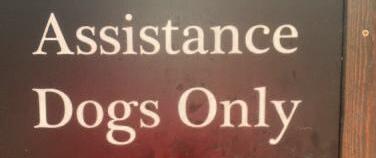




King James’s School
Saturday, 23rd November at 6.30 pm for 7.30 pm
The Almondburians’ Society is undergoing major change, and this year’s Annual Dinner is the first under its new name. The ASOC objective: to establish ever-closer links with the King James’s School of today whilst continuing to record with pride the historic achievements of the School over four centuries.
King James’s School also continues to undergo change - not only because of ongoing changes of educational policy at national level but also the major enlargement of the School to over 1,100 pupils in recent years to accommodate pupils transferred from Almondbury High School.
This year we have invited ASOC Chairman WAlTer rAleigH and KJS Principal iAN riMMer to share their thoughts on the best way forward for ASOC and KJS to work together in the years ahead.
Musical entertainment will be provided by KJS musicians:


Welcome
WalTer raleigh chair, the almondurians’ society
WalT
er attended heckmondwike grammar school from 1963-70 and studied Pe and history at loughborough from 1970-73. from 1982-85 he completed a part-time degree in education at bradford university. he initially joined King James's in september 1978 as head of Pe but became head of Year and later head of lower school. in 1990 he moved over full time to teach history and was promoted to the post of assistant head in 2000. he retired in 2010. Walter and his wife eileen have two boys and four grandchildren. Walter will propose a toast to The School.

Joshua TiPladY
KJs head boy



ianaddress
Tarleen auJla
KJs head girl
ian riMMer Principal, King James ’ s school
was born in southport where he attended King george V grammar school. he took a degree in Mathematics and statistics at the university of leeds followed by a Pgce at nottingham where he met his future Katherine initially he taught in nigeria and subsequently Tanzania, experiences he describes as ‘life changing’. returning to england, he taught in the south of england before moving north to take up the position of assistant head/Vice-Principal at KJs to be closer to family. ian and Katherine have two children. ian is now in his tenth year as Principal.. Ian will propose a toast to the Almondburians’ Society.
response response WalTer raleigh
The school song

As we go to press, these are just a few of the

lawson hugh 1954 1961 sheffield
leake Prof robin e 1954 1960 glasgow
lofthouse John howard 1952 1959 sheffield
Makin chris 1954 1961 Mirfield
Milnes graeme 1957 1965 cardiff
Morgan Paul 1957 1963 london
Platt ian richard 1958 1965 stocksmoor
raleigh Walter ex staff almondbury
rimmer ian Principal holmfirth
royle Prof edward 1955 1962 leamington spa, Warwickshire
sharp John franklin 1951 1958 leighton buzzard, bedfordshire
sheard carol guest Whitchurch, shropshire
sheard richard george 1954 1962 Whitchurch, shropshire
smith John oswin 1957 1965 saffron Walden, essex
sykes stuart

All Hallows’ Church, Almondbury Friday, 22nd November at 1.45 pm (Procession up St Helen’s Gate will leave the School at 1.30 pm)
Service conducted by ASOC Chaplain Rev Graeme Carby.
Address: Linda Smith
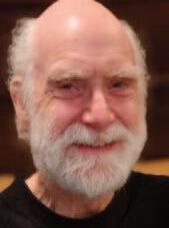
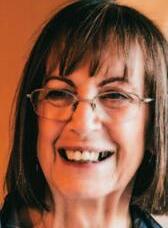

g raeMe attended King James ’ s grammar school from 1962-70. he graduated from Manchester university and initially took up a teaching career. in 1990 he retrained, taking a Post graduate diploma in Theology in st John’ s college, nottingham, after which he was ordained as a deacon (1992) and Priest (1993) in 1996 he became a Team Vicar in cyncoed, cardiff. graeme retired in 2018 and moved back to huddersfield. he became almondburians’ society chaplain in 2022.
born in halifax, linda studied Theology at the university of nottingham and had an extensive career in education in nottinghamshire and leicestershire. Most recently she was Principal of frewen college in east sussex, a long-established co-educational independent day and boarding school for dyslexic and dyspraxic children aged from 7 to 19. linda has been a church Warden at all hallows’ church for the past five years.
Organ: Pauline Roberts (Organist and Director of Music, All Hallows’ Church)
Other music: Lily Beaumont, Ava Peace, Shalome Jacob, Doran Kane (King James’s School)

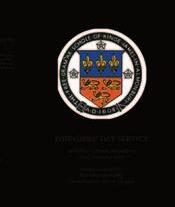


Following the recent integration of King James’s School and Almondbury High School, we remember a former High School pupil who served fearlessly in the British Army Explosive Ordnance Disposal Squadron and lost her life serving in Afghanistan.

in July 2017 almondbury
high school – or almond-
bury community school, as it was called at the time –
closed. The majority of the
students were absorbed into King James ’ s
and as a result were encouraged to buy
into the culture and philosophy of our
old school. This involved accepting the
ethos of a high achieving academic school
together with its long history and tradi-
tions.
amongst the long standing traditions
was, of course, the remembrance day
service held each year in school where
the names of the 41 former students who
died in the first World war and the 35
former students who were lost in the sec-
ond World war are read out to remember
their sacrifice. it is hoped all students at
King James ’ s respect, honour and take
pride in the ultimate sacrifice these local
boys made.
as a former teacher at almondbury
high i know there were many students
who attended almondbury high school who worked hard and when they left be-
came role models not only for their old
school but also for the wider local community. it is therefore only right that
this new combined school should celebrate
all those who went before them and gave
service to their country.
one such person was captain lisa head.
lisa Jade head was born on 30th november 1981, a first child to her loving
parents leila and John head who lived in
the village. as she grew she first attended
greenside nursery school and later almondbury Junior school down southfield
road. she proved to be a bright active
girl who did well in all lessons but par-
ticularly in any sport she was offered.
at the age of 11 she moved to almond-
bury high where her progress continued.
after five years she left almondbury high
with a clutch of a and a* gcse certificates and unsurprisingly entered greenhead
sixth form college. she now had a vision for her future as she decided to seek a career as a Physiotherapist.
however, she didn’t enjoy greenhead
as much as she had hoped and even considered dropping out before taking her a levels. fortunately, she was persuaded to complete her a level courses and, as with all things lisa did, she succeeded and finished with some excellent grades. during her time at greenhead she had begun to have a re-think about her future career. Whether it was the subconscious
Relaxing with a book: Lisa in Northern Ireland in the 321 Explosive Ordnance Disposal Squadron
influence of her father and uncle who had both been in the military, lisa went on a
visit to the army recruitment office in leeds. she was encouraged, with her out-
standing academic and sporting ability, to seek entry at officer Training level. To get some experience of life in the army
she was invited to join the army cadets and for the next few years she became a very active member and thoroughly enjoyed the experience.
lisa was also advised that in order to get a place at sandhurst the army looked more favourably at candidates who had already graduated from university.
once lisa had decided she wanted a career in the army she applied to huddersfield university to take a degree in human biology. she was accepted and took up a place the following year. she
continued her role in the army cadets whilst working on her degree. after three years she graduated with an honours degree and so in 2003 after her successful application she started her three year
course at sandhurst royal Military academy.
lisa loved sandhurst and excelled at everything she did. her mother said lisa got on well with others on the course who she found to be very friendly, supportive and who remained good friends for the rest of her far too short life. however, apparently lisa did say sandhurst took a turn for the worse when first Prince William and later Prince harry joined. suddenly, a campus which had allowed the students to be relaxed in the evenings and weekends changed. not sur-

prisingly, security became even more
strict, as you would expect, when the
future monarch and the spare were around the place.
on graduation in august 2005 she was
commissioned into the royal logistical corps where she served tours of duty in iraq and afghanistan as an air Transport
liaison officer.
her parents are unsure what happened
next to cause another change of direction
but for some unknown reason lisa applied
to be transferred to the 321 explosive
ordnance disposal squadron. as a very
able and popular officer her application
was accepted and she began her training.
she served in northern ireland, where, whatever we read about peace and the
good friday agreement, the bomb disposal
service was still in great demand. as she
gained more experience she achieved the
‘high Threat ied* operators’ award which
indicated great expertise and skill. she
was one of the best of the best.
lisa was deployed to afghanistan again on 27th March 2011. on the 18th april,
some 22 days after arriving in afghanistan, her unit was called to nahri saraj in helmand Province where a suspected ied had been found. it was down an alley
which was well used and was regularly
‘swept’ for ieds. it had been cleared only
a couple of days earlier but after a sandstorm something suspicious was seen in the sand.
lisa went and disabled the ied. however, once an ied had been disabled it had to photographed so military experts
could identify who had made the bomb. someone offered to go and do this but
lisa insisted she would complete the job.
as she approached the diffused bomb a
‘daisy chain’ of other ieds exploded causing
catastrophic injuries to lisa. experts later found the defused bomb had been linked in a cluster to other nearby ieds in an attempt to catch out officers after
what appeared to be a suc-
cessful mission.
lisa lost both legs and one arm in the explosion. she was rushed by helicopter to the military hospital at camp bastion in lashkar
gah. after a quick assessment she was air-lifted to the Queen elizabeth hospital in birmingham where the most serious cases from mili-
*Improvised Explosive Device
tary operations were taken. The prognosis was not good but lisa’ s mum and dad together with her two sisters, helen and Jayne, were able to get there in time before lisa sadly died next day. on the 6th May lisa’ s funeral took place in huddersfield Parish church. it took place with full military honours. over 1,000 crowded into the church with
many more outside showing their love and respect for the bravery of this extraordinary almondbury girl. her coffin was carried in by members of her unit and amongst the dignitaries joining Mr. and Mrs. head were politicians and army top brass. it was an incredibly sad but proud
occasion for all her family. after the church
service her coffin was taken to almondbury
cemetery where lisa was laid to rest.
at the funeral lisa was quoted as saying
she had ‘the best job in the world’. her
commanding officer, lt. col. adam Mcrae described lisa as ‘a self-assured, highly effective operator and a well -liked leader who would be an enormous loss’.
The coroner, Paul Marks said, “it is a
testament to her own physical stamina


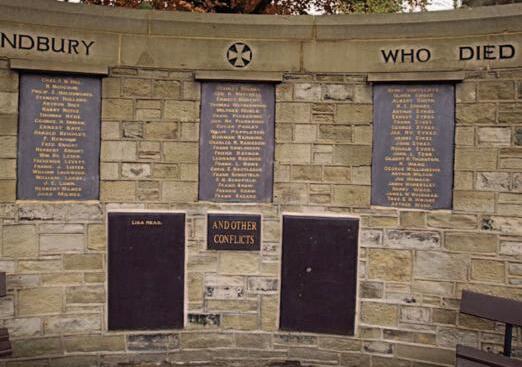

and the quality of care she received that lisa survived as long as she did with such
catastrophic injuries.”
shortly after the funeral Mr and Mrs
head received a wonderful arrangement
of flowers together with a letter from the
Prince of Wales. it included an invitation
to tea with the Prince, now King charles, at highgrove, his private residence in
gloucestershire. Mr. and Mrs. head went along to meet the Prince and Mrs. head spoke to me about this wonderful experience. like most of us she had viewed the royals as remote from ordinary people
but could not speak too highly of our
King. she said he showed great kindness and empathy, as of course, he had had two boys of his own in the military and one, harry, who had served in this very dangerous war zone.
Those of you who live or pass through almondbury will know that lisa’ s name has now been added to those who lost
Lisa’s name is recorded on the memorial dedicated to ‘The Bravest of the Brave’ at the National Memorial Arboretum in Airewas, Staffordshire.
Almondbury War Memorial: Lisa’s name (inset) has now been added to those who died serving their country
their lives in the two
major wars of the 20th
century, at the War Memorial in almondbury. her
name also appears at the
national Memorial ar-
boretum in staffordshire.
i am delighted that
ian, our Principal, and the KJs governors have agreed that lisa’ s name
will be added to those we remember each
year in school at the remembrance day
service. it will be a visible sign of the in-
tegration of our two schools. lisa deserves
nothing less.


Roger Sykes (1946-1953) revisits some of his favourite drawings


SeeiNg my drawing of the School pavilion has brought back so many memories. The pavilion itself was no beauty but hosted many happy occasions. it acted as the focal point of crowded changing rooms with an outside veranda where watchers sat on benches and clapped for a brilliant dismissal or a boundarythe ground being small it seemed easy to slog a ball past the long jump sand pit for a 6!
The cricket ground was the centre for sunny days – whereas these days we seem to have more days of rain! The annual Sports Days were enlivened by parents and families coming to watch and House competitions were often raucous affairs!
The pavilion was becoming somewhat aged and worn by 1958 when it was replaced by the magnificent new Memorial Pavilion (right) located a few yards to the left. How lucky the later generations were to enjoy the new pavilion – and perhaps play a better game!
l The new pavilion sadly fell into disrepair in recent years and ambitious plans to replace it, championed by the Old Almondburians’ Society and the KJS Foundation, were not implemented as cricket was no longer being played regularly at the School. However, as we go to press a new plan is under discussion that may result in the cricket field being used again (see page 22).

c r icK e T
ANDREW HAIGH
A recent enquiry could result in the School cricket field returning to service.

The parcel of land which
the King James ’ s school foundation owns includes the cricket field, which has sadly been out
of use for its intended purpose since
the demise of the almondburians’ cricket club. The pavilion was used for
a period as a changing and post-match refreshment facility by almondbury spartans r.l.f.c., while they rented the
top football field from the school to play their matches. in addition, the perimeter of the field does now form
part of the school cross country course and the school have used the pavilion
as a quiet space for gcse languages oral examinations. however, its use is now increasing again and may be
about to increase further.
recently, the 37th huddersfield (almondbury) Methodist scout group has been using the pavilion to meet on
Monday, Tuesday and Wednesday evenings while they raise funds to renovate the scout hut on longcroft.
This academic year the school will
be using the pavilion as a teaching

space. a small group of pupils will receive additional lessons in literacy, numeracy and social and emotional wellbeing during the day on Monday,
Tuesday and Thursday. This is part of
a programme to reactivate engage-
ment with school for pupils who have
low resilience. as part of this, there has been some refurbishment of the pavil-
ion and it now has a telephone line and internet connection.
now, we have been approached by almondbury Wesleyan cricket club.
The Wesleyans started Women and girls cricket last season, by entering a team into the West Yorkshire Women and girls softball league. This season
they expanded it, with three more
teams: u13 softball, u15 hardball and Women ’ s hardball. having so many ad-
ditional teams has made it very difficult at times to fit in all the extra
fixtures on their ground and so they
approached the foundation with a view to using arkenley for some of
their fixtures next season. represen-
tatives from the Wesleyans attended
our last Trustees meeting, which was very positive.
The idea that we explored is that, initially at least, our arkenley field
would be used for the two softball teams. having been out of use for a number of seasons, the square will require a lot of work to get it fit even for softball cricket, but if the cricket club can undertake that, then the foundation would be delighted to see the field at arkenley being used for its intended purpose once again. Watch this space for further developments!
l The King James’s School Foundation was established at the time that King James I granted the Royal Charter to the School in 1608, when approximately 2.8 acres of land were conveyed to the trust to be held for the purposes of the School and occupied by it in perpetuity. In addition to allowing King James’s School to use this land and the buildings thereon, the aims of the Foundation include providing items, services and facilities to the School, promoting the education of individual pupils at the School and promoting the education of young people under the age of 25 who are resident in the ancient Parish of Almondbury. Two of the main ways in which the Foundation currently supports the School is by paying for the lease and covering the running costs of the School minibus, as well as sponsoring the rewards scheme in School.
We are always delighted to receive articles, letters or photographs for publication in The Almondburian. Photographs should ideally be at 300dpi resolution at the size at which they will appear in the magazine, and in .jpg or .png format. Please submit photographs as separate attachments, not embedded in Word documents.
Editorial email address: almondburian@asoc.org.uk
For those still to experience a Heritage Open day at King James’s I suggest you make sure you put it into your diary next year. It showcases all that is good about our old School.
on saturday, 14th september the
school looked a picture both in-
side and outside which says
much about Tony, our Premises Manager, and his team. on a stroll outside, the head’ s garden and surrounding area
looked immaculate. inside everything was
clean and tidy which is not always possible in a school of over 1,000 students.
if the school was the cake then the stu-
dent guides were the icing. once again, they were magnificent ambassadors for the school They were all in full school uni-
form and that set the tone. Their enthusi-
asm and joy at being chosen to act as guides was for all to see. Parents and school can be very proud of them as they
continue the long line of previous stu-
dents in this role as guides. our thanks to abbi Terry, assistant head, for once more recruiting a wonderful group of Year 10 students for this demanding task and looking after them on the day.
My conversations with ian, our Principal, have all been about steadily developing the links between school and the society in an ‘evolutionary’ rather than a ‘revolutionary’ way and this event is a wonderful example of this. We began in 2017 by opening up the ground floor of the old school building, so visitors could look
round the old dining hall, the head’ s study and the big (odh) and small as we aimed to attract former students keen to look look round. subsequently the dorms and the social area with its Timeline display were added to the itinerary.
This year, and for the first year, the whole school was opened up and we also had students playing music as visitors walked round. once again the royal charter was on display and this attracted enormous interest.
There were just over 40 visitors, very slightly down on last year, but as the tours now took twice as long it didn’t seem to make the school or guides any less busy. it was a bonus that the visitors included John broadbent, one of our most senior former pupils, and i know he enjoyed his trip down ‘memory lane’.
it really was another wonderful saturday spent in the school and i need to thank all who made it possible.

The head of Music, charmian gott, was there with the musicians and we must thank them all for their efforts which were appreciated by all. The society was once again represented by
Keith crawshaw and our chaplain, graeme carby who did sterling work en-
couraging former students to take a copy

of the July magazine together with an
asoc application form! We hope for posi-
tive results.
finally, at these events it reminds me of
how important it is to maintain our data-
base of former students. We have had our
difficulties over recent years in updating
this database because of the fear of falling
foul of data Protection laws. i think we have now resolved these worries because

the old parts of
of reassurance from the organisation
which oversees the process. i mention this
because two visitors came to see me with
names of relatives who had attended our
school, one in 1910 and one in 1942. They
wanted to know if we knew anything
about them. i went home and used the da-
tabase to be able to give them a little more
information about their relatives’ time in
school. it really is rewarding when the so-
I was showing some visitors round and they were looking at the boards displaying the names of former Head Boys. One name was that of Head Boy in 2003/4, Adam Brook. I mentioned that he was a lovely lad as well as being very bright, and added that he had wanted to be a doctor though I didn't know whether he had achieved this.
About five minutes later I was in the Reception Area when some visitors arrived. I could not believe it when one of them was Adam Brook who was over for the weekend and had decided to visit the School with his parents. He was indeed a doctor and worked at Scarborough Hospital as an Obstetrics specialist. I had not seen Adam since he left school some 20 years earlier! What a shock but delight. Just the same smile and pleasant nature - it really made my day.
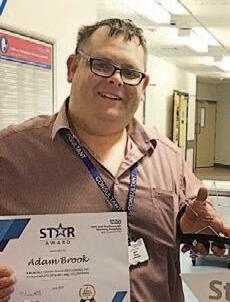
Adam Brook: Yorkshire & Scarborough Teaching Hospitals ‘Star Awards’ finalist 2023
The importance to Huddersfield of the woollens industry cannot be exaggerated. We are proud to recognise the major contribution of former Crump pupil Arnold Frobisher.

arnold frobisher was born on 16th august 1895, the second son of lockwood grocer/butcher fretchfield frobisher and his wife ada. he was distantly related to the great english navigator and early explorer sir Martin frobisher (1535-1594). arnold entered King James ’ s grammar school in september 1905, one of 37 new pupils joining the school in that year. his notable contemporaries included leslie Kenworthy, who became a dartmouth
Medallist in 1912 and went on to become a top barrister; and John l dawson who became a leading
figure in education in huddersfield, latterly as chairman of the education committee. The school was doing well under new headmaster robert crump, who had taken over from the hapless leonard griffiths in 1901.
arnold did well at King James ’ s and excelled particularly in french and
Mathematics, receiving handsome inscribed books from the headmaster in 1908 and 1910.
he left King James ’ s to take a bsc degree in economics and economic history at university college london. There, he was awarded a crewdson benington research
fellowship for post-graduate work in the department of applied statistics under the
eminent mathematical statistician Prof
Karl Pearson.
Wool was of vital importance for the
clothing of soldiers during World War 1 and arnold, was appointed assistant statistical officer in the department of Wool
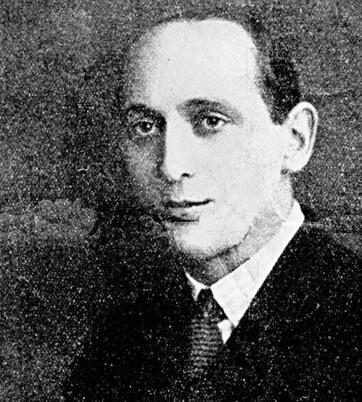
Textile Production, responsible for a fortnightly census of
wool consumption for the surveyor general of Wool supplies and for the machinery census of the textile industry. in recognition of this work he was elected fellow of royal statistical society in 1919. arnold then took up a position with an organisation in which he was to remain for



Arnold Frobisher received two handsome books, bearing the signature of headmaster Robert Crump, in 1908 and 1910; Edward Spencer Beesley’s Queen Elizabeth (pub. 1906) and C A Wurtz’s The Atomic Theory (pub. 1910). The books have now been added to the school archives.
the rest of his working life: the newly set up
‘british research association for the Woollen and Worsted industries’, subsequently known as the Wool industries research association
(Wira). his initial role was as its first secretary, and he became director of research there in 1928.
in a paper written in 1920, arnold explained that the main object of the association was ‘to promote co-operation amongst wool-using firms with the view of establishing a national scheme of research into the problems presented by the woollen and worsted industries’.
The association, commonly also known as ‘Torridon’ occupied two converted houses, Torridon and longfield, in headingley lane, leeds. it grew rapidly during arnold’ s time as director. Member firms were able to seek advice from the association ’ s scientific staff, and biology, chemistry, physics, biochemistry
and bacteriology laboratories were set up in the grounds of Torridon to study the properties
of wool and the effects on the wool of the
various manufacturing processes. The as-
sociation also acquired full sized machinery for woollen and worsted carding and spinning, to investigate these processes in depth. a
colour department was also set up to study
the action of various dyes on wool when exposed to sunlight, perspiration, and the as-
sociation built up a library which supplied
members with regular abstracts from current
literature.
Wira made many important contributions
over the years. in 1952, The nobel Prize in
chemistry was awarded jointly to Wira
scientists archer John Porter Martin and richard laurence Millington synge for their
invention of partition chromatography.
Continued on page 27

headmaster of King James’s grammar School from 1901-1912, has always seemed to me to be one of gures in the long history of the School: he arrived with the highest of hopes but left, 11 years later, disillusioned due to circumstances that were largely outside his ochdale in 1866, Crump was educated at bradford rammar School and gained degrees in Classical Moderation university. He joined King James’s after ten years’ teaching at bath grammar School.
Crump took over from leonard griffiths in 1901 when the number of pupils had fallen to just 24. He made a good start, appointing several excellent new teachers, and by 1908 the numbers had risen for the first time in the School’s history to just over 100. Crump threw himself into Almondbury life, taking the role of Sir Francis Drake in a village pageant held at Woodsome in 1906. He was also involved in the organisation of an ‘Olde english Faire’ at Woodsome the following year. Then, in 1909 (a year late, we now know), Crump was centre -stage for the major celebrations to mark the School’s 300th anniversary. t was a happy time for Crump and his family, now obert (who had himself become a KJgS pupil in 1903) and his daughter Sylvia. Conditions in the schoolhouse must have been cramped: the 1911 census reveals that the household was supplemented by two teachers, ertrand beaumont who had arrived in 1908, and four boarders. Fortunately, Mrs Crump was able to draw upon the services of a nurse, two housemaids and a
ut a bombshell lay around the corner. Contrary to the recommendations in the Sadler report that the School should be eld’s principal municipal secondary school, the honour went to the old Higher grade School in New North oad. This opened in January, 1909 and the number of pupils attending King James’s started to plummet. by 1912 the roll had dropped to 56 and the anxious Crump’s health began to suffer.
To general surprise Crump decided to give up teaching and – alone and without the support of his wife and family – emigrated to british Columbia to take up fruit farming. This proved a disaster, and within months he was back in england; war had just broken out and he took up a teaching position in london until his retirement. He died in eastbourne in 1956.
Continued from page 25
in addition to his responsibilities at
Wira, arnold was a member of many
committees including the Publications
and Yorkshire section committees of the
Textile institute and the committee of
bradford Textile society. he was also secretary of the Joint education committee which advised the city and guilds institute
of london, and secretary to the Joint com-
mittee on sheep breeding council (later
the Wool breeding council). in 1923, he
was appointed honorary assessor for di-
plomas in commerce at huddersfield Technical college. arnold was also in demand as a lecturer on european economics and economic history.
in 1922 arnold became a special correspondent to the industrial Yorkshire section of the Times Trade Supplement, a special edition of which was devoted to the wool textile industry.
arnold travelled widely on the continent, visiting research institutions in germany,

Wool Industries Research Association dinner, early 1920s: chief guest was businessman Lord Gainford who went on to become the first chairman of the BBC from 1922-27.

‘Torridon’: this plaque is on the gatepost of the Victorian mansion in Headingley Lane, Leeds that was the former home of the Wool Industries Research Association (WIRA). WIRA scientists Arthur Martin and Richard Synge were awarded the Nobel Prize for their invention of partition chromatography. The house is now the site of a business park.
belgium and france. he produced a major report in 1928 with much statistical in-
formation on industrial organisations
abroad, especially manufacturing plants and conditioning houses. he also became economic advisor to the swedish government for the preparation of wages statistics in all sections of the wool textile industry there.
arnold spent his retirement years at his home in guiseley, where he died on 16th september 1972.
lWIRA later became the Wira Technology Group before being merged with the Shirley Institute in 1989 to form the British Textile Technology Group.
We should like to thank Diane Nursten, also distantly related to Arnold Frobisher, for sending us the books presented to him in his schooldays and for general biographical details.

HuDDerSFielD’S woollens industry depended crucially on chemicals and it is not surprising that for years the name of iCi was for most locals synonymous with the word ‘Dyes’. The growing importance of Chemistry was soon recognised by King James’s grammar School, which was one of the first schools in the country to give Science a recognised place in the curriculum.
On 12th December 1851, a Chemical Society was set up with the aim of ‘cultivating Chemical Science’ and in due course there was an established course under the direction of former pupil John Nowell of Farnley Wood and george Jarmain, the schoolmaster of Almondbury Church School.
The building on the right, known as the ‘Cloisters’ ran along the back of the School, and was built in 1868 to provide a home for the Society. it became the first Chemistry classroom in the district. The Cloisters had various other uses over the years, including a gymnasium, but by 1918 it had been converted into an outside cloakroom.

The larger photograph shows the laboratories that replaced the Cloisters in 1900. The singlestorey building, to the design of architect John Haigh of Abbey and Hanson, cost £811 2s 3d and had a relatively short life, being demolished in 1938 to give way to the present two-storey building on much the same footprint that survives to the present day. n King James’s School became a Specialist Science College in 2004.
Ofsted - the Office for Standards in Education - was set up in 1992 and has attracted much criticism in recent years. A former teacher and deputy head gives his verdict. e

ian riMMer’s regular
piece From the Study gives
insight into some of the
complexities of running a
state school today. his is one
of the first articles to which i turn in The Almondburian, and one from which i learn
most about the struggle it is for teaching professionals today to maintain standards, and at the same time keep the personal life/work balance which they and their
families deserve. abbi Terry’s descriptions
of her work in the classroom provide a
sense of reality at the grassroots, while the
new series Meet the Staff interviewing ian Williamson, head of hu-
manities, i think could prove an editorial masterstroke bringing society members and school staff to a closer understanding of each other. as almondburians we need to see the school as it is now, not as we remember it, and be proactive in supporting it where we can when help is sought. it does not come easy for me to confess to being out of touch with what is happen-
ing in schools today, particularly having
spent my working life in education. but i
am. i have never been subjected to an ofsted inspection, and from what i hear, read and see have escaped a process unfair,
unfit for purpose, conducted by an organisation which was badly conceived in the
first place and has passed through a number of metamorphoses by govern-
ments attempting to salvage something
sensible from the damaging agency it has become.
and it is still being inflicted on schools, with effects devastating to workforce morale. We have all seen and read of the disastrous effect an unfair and unbalanced ofsted report on her school had on headteacher ruth Perry. in the

view of the coroner at her inquest it contributed directly to her suicide. a study by leeds university in March 2023 found ten cases of headteacher suicide where coroners gave as
a major contribution to the death, the
ofsted report on the head’ s school. The
best that appears to come out of an ofsted
JOHN EASTWOOD graduated from UCL in 1961 with a degree in Geography. He taught Geography in grammar and comprehensive schools until 1990, ending as deputy head of a 13-18 comprehensive school of 1800 students. John worked as a teachers’ union officer from 1991 until he retired in 2008. He lives in Sowerby Bridge, West Yorkshire.
inspection appears to be satisfaction in the
school that it is finished and the inspectors
have gone.
ofsted – The office for standards in
education – was created by John Major’s
Education (Schools) Act of 1992. it replaced
inspections previously undertaken by hMis (her Majesty’s inspectors of schools) and those by local education authorities
which had been given that responsibility by the education act of 1902. Major said he believed the old arrangements for inspection did not have sufficient rigour. What he did
not say, but was true, was that the govern-
ment sought to take closer control of schools by transferring the important
function of school inspection from local authorities to central government. ofsted inspections would take place every four
years. This timescale was itself replaced in 1995 by six or three yearly inspections, de-
pendent on whether a previous inspection had judged a school ‘outstanding’ or only ‘satisfactory’.
until 2005 inspectors were styled registered, team or lay inspectors. it was not necessary to have any experience in schools to be an inspector or even a inspection team leader. between 2005 and 2015 inspectors were no longer employed by the government, but by private companies, regional inspection service Providers (rsiPs), contracted to the government to do the inspections. in 2015 the government ended the contract with the rsiPs, deciding to have ofsted employ inspectors directly. ofsted had concerns regarding the quality
and qualifications of the existing inspectors and the inspections they had been
doing and did not re-engage some 40% of
them into the new service as a result.
from time to time since 2015 ofsted has changed its inspection priorities and periods of time elapsing between inspec-
tions. The pre inspection information schools must provide is therefore con-
stantly changing, as is the period of notice
a school has before the inspectors arrive.
This is in itself unnecessarily stressful for teachers, akin to awaiting execution, but
not knowing how long you’ve got left.
schools don’t know where they are.
it would not, of course be appropriate for
schools to go their own way without being
subject to external inspection. The issues
are who should be in charge of the inspec-
tion, who should inspect and how, and in what form should the result of an inspec-
It would not, of course be appropriate for schools to go their own way without being subject to external inspection.
tion be conveyed to the school and the public. few outside ofsted would
argue that the use of one
of four unqualified adjectives – outstanding, good, satisfactory or inadequate – is the answer. The education act of
1902 required county
councils and boroughs to set up a commit-
tee called the local education authority to replace the old school boards and be responsible for state funded elementary and secondary education in their areas. among
the duties these leas had was that of
school inspection. Thus huddersfield
county borough and the West riding
county council established teams of in-
spectors, often later called advisers, for
Amanda Spielman was HM Chief Inspector of Education, Children's Services and Skills from 2017-23. Sir Martyn Oliver succeeded her on 1st January 2024.
their respective areas. The board of education as it then was worked through the
leas. The 1972 local government act re-
placed huddersfield county borough with
an enlarged authority, Kirklees, while the
West riding was split between a number of
the new local authorities which included
Kirklees and calderdale. These new auth-
orities assumed their duties as leas which
included that of school inspection. Teams
of inspector/advisers were recruited, normally transferring from the old leas to the
new, and together with hMis remained the
agents of inspection until the creation of ofsted in 1992.
local authority advisers had experience
of working in primary schools or were sub-
ject specialists if they were to work in secondary schools. They were normally based at a teachers’ centre and travelled round their allocated schools in their working day.
They knew the strengths and weaknesses
of their schools and teachers because they regularly saw them at work. They were valued by heads as trusted colleagues and could often be relied upon to find funding for small projects. in my experience they were on first name terms with teachers, not regarded as authority figures. gervase finn gives a not totally inaccurate description of their work in his novels based upon his time as adviser and schools inspector in north Yorkshire. hMis were a different breed – highly qualified intelligent professionals – what barry ‘luke’ Kaye (KJgs 1948-56) would have styled ‘big brains’, and with constructive attitudes. You didn’t get


the feeling of their trying to catch you out. all changed after 1992 with ofsted and the views expressed by ian rimmer and ian Williamson on the shortcomings of that body are widely echoed. it is to be hoped that with the departure of amanda spielman, ofsted chief inspector between 2016 and 2023, and the arrival of the very experienced sir Martyn oliver as her replacement, things will improve. spielman was privately educated at a girls' 6th form col-
lege and after cambridge spent some 20 years in finance. she had no teaching experience which led a parliamentary select committee to reject her as chief inspector in 2016. Yet she was appointed.
The Principal notes the difficulties that schools have in teacher recruitment, while ian Williamson was asked in Meet the Staff
if he regretted the school not having a 6th form to teach at King James ’ s. i suspect the two are not unconnected, al-
though inadequate teacher pay is certainly the major issue. i know that as a young graduate i would not have gone into teaching had i not been aiming to work in a school with a 6th form. There was no comprehensive school with a 6th form in the north of england when i graduated in 1961. There is an attraction for subject graduates to teach at what is effectively university entrance level bright 17 and 18 year olds. as a geographer i found that my passing an examination on meteorology, pedology or the theory of industrial location did not give me the detailed background knowledge to teach these areas to ‘a’ and ‘s’ level students, particularly when they asked questions. Meeting that challenge was a big part of my job satisfaction, and
Difficulty: tough
each row, column and 3 x 3 box
must contain the
digits 1 to 9
had i not had the ‘a’ level work in addition to the lower school work which i also enjoyed but in a different way, i think i would have followed a different career.
l KJS Principal Ian Rimmer comments: It is encouraging to hear an appreciation and understanding of the challenges schools face these days. Schools are significantly different places nowadays to when I went to school in the late ’70s/early ’80s, with levels of accountability infinitely higher and far broader than they ever were. For example, my (grammar school) teachers could, and would, simply adopt the attitude that if you weren’t studious and you failed it was your problem. There is no way we could even contemplate such an approach these days. But beyond that, the scope of aspects of children’s lives for which schools are held responsible seems to know no bounds. One shouldn’t be surprised then if, having extended the range and depth of accountability, people decide to leave the profession en masse.

ACROSS
9. Opener I created for trailblazer. (7)
10. National is artist and priest. (7)
11. Player in street game with mindreader. (15)
12. Quantum agreement holds back scope. (5)
13. Explain there’s no point in lengthening Broadcast. (9)
14. Headless warder found on ship. (4)
15. Run away with band exercise. (5)
17. Beats back box. (4)
21. Shredders could be used by 11. (9)
24. Backing Liverpool, for example, holds nothing for soldiers. (5)
26. Deeming naturist unfit for trivialisation. (15)
27. Musk embraces Greek character for another one. (7)
28. In the open air, but not in team. (7)
1. Jump well. (6)
2. Tory battle for starter. (8)
3. Hide classified drug. (7)
l The winner of
Crossword by Hérisson (July 2024) was John Bradley (1950-57)

4. Head of Commonwealth, with memory OK, could be Henry’s fixer. (8)
5. Gesture made by Leo, perhaps, with Aries and Libra initially. (6)
6. Scottish island gets half sort. (7)
7. Stop believer holding sin’s origin. (6)
8. She pays attention to realist energising, not all there. (8)
14. Adder, for example, put in one who arrives. (8)
16. Randomly poisoned Olympian. (8)
18. In favour of greeting little outlaw. (8)
19. Refined Wimbledon feature, lately evacuated. (7)
20. Way to riches (a non-starter), creates deception. (7)
22. Stud in frenzy, he’s naked. (6)
23. Crazy as nine bananas. (6)
25. Constant force obstruction for Pooh’s friend. (6)
Entries to the Editor (address/email: back cover) by 31st January 2025. Prize: 12 months’ free OAS membership Name Email Tel
I n case you might have missed it on the news, there’s another American presidential election in the offing. Our man over there explains how is all works – or doesn’t work.

The business of us elec-
tions can be bewildering
to foreigners, not to mention americans
themselves. They’re h ld
every four years be
framers of the cons
who’d had enough of
thought it wise to limit t
ure, reach, and influenc future leaders. simila
great britain there are two
major parties: the repu
licans (= Tories) and democrats (= labour) and
sometimes a few indepe
dent outliers (such temporarily at least, r bert f Kennedy Jr.). bu there is no substant
third option equivalent to the greens, liberal demo
crats, snP, uKiP, or th
cial Monster raving loo
Party. even if they can
together enough cash to pete, independents a
mately foiled by the power
institutional forces tha
spire to maintain the st
after about two yea
of shouty posturing du
primaries and caucuses, each party
picks a raving loony presidential candi-
date at their respective national con-
ventions. The choice might not ily be the best person for the

y a figurehead con-
ve the most ‘voter apalent to brits voting inner of strictly.
n day is held on a in november. back america was a mostly society, farm folk had to travel far to eir votes and this more convenient for ter the fall harvest ore winter set in. arket days were held -week and weekends et aside for churchy uesdays seemed like ice. Voters can also r votes prior to eleculd they desire. totting up a nationr vote – because that r too logical – balloting confusing system ectoral college (too to detail here) in ppointed groups of
electors get to choose the winner. This means a presidential candidate can
earn the largest number of popular
votes but still lose the race. The original
idea – i think – was a compromise worked out by the founding fathers
which allowed states of varying sizes
equal representation in government. for example, california, the most popu-
lous state, casts 52 electoral votes whereas Wyoming, with the lowest
population density, casts 3. out of a total of 538 possible electoral votes the
magic winning number is 270. it’s
a matter of opinion, but a o
vote system somehow seem
fairer and more practical. states have been coined
either ‘blue' (democrat) or ‘red’ (republican), catchy
shorthand terms broadly
summarising their ideologi-
cal makeup. With those out-
comes almost a foregone
conclusion, presidential campaigning is disproportion-
ately concentrated in the remaining, less partisan ‘swing’ states where as-yet uncommitted votes are up for grabs. When races are close independent candidates risk becoming ‘spoilers’. for example, in 1992 business
magnate ross Perot failed in his run for office but he hijacked enough votes from incumbent george bush sr. to let bill clinton stroll to victory. four years later republicans got their revenge. This time t
bush family pet, george ‘dubya’, finagled a win over al gore, clinton ’ s former Vice President, by a narrow margin in the battleground state of florida – where, coincidentally, gWb’ s brother Jeb was governor. gore contested the result. after days of national frustra-
tion, confusion and multiple ballot recounts, the supreme court stepped in to name george the victor to end the stalemate ‘for the good of the nation’. even more politically divisive, of course, was the biden-Trump debacle of

2020. fueled by donald Trump’s lies of
aud, thousands of malconched on Washington dc, ming capitol security forces most succeeding in their attempt to prevent the transition power. endangering the lives congressional politicians, members of the self-proclaimed oath Keepers, Proud s, Three Percenters and groups displayed their pam by smashing windows, ing doors, and pooping on oor.
istorically, opposing politiwould reach across the in congress to help pass gislation but in the last few es inter-party cooperation ppens less and less frequently. n there’s a shift of power in t britain, her civil servants erally stick around to keep mportant governmental busiss running smoothly. (see Yes, Minister for details.) for the most part, in
america the worker drones get kicked
out in favor of the new president’s ap-
pointees.
americans no longer believe that
their political representatives have
their best interests at heart. how can
they change that? by voting and bring-
ing about peaceful change? Tens of mil-
lions of dollars are spent on an endless
tug of war between the same two estab-
lished parties. around 14 billion – that’s
billion – dollars was spent during the
2020 campaign. it was the most ex-
pensive so far, a result of the supreme
court’s decision that there should be no
limits to campaign donations. (Political
action committees or ‘super Pacs’ are no longer required to disclose their
sources.) how much can an individual’ s
vote count when so much money is being spent by special interests to influence the outcome? i suppose if the great unwashed aren’t happy they can
always stage a violent insurrection or try to assassinate the winner. This is america, after all.
The you-never-had-it-so-good baby boomers are an endangered species
facing a mass die-off, while younger voters doubt that Washington ’ s geri-
atric time-servers, regardless of their
accumulated knowledge and experi-
ence, are physically up to the task of ad-
equately representing upcoming
generations. gathering dust in america’ s halls of power, half of the
crusty politicians in congress are between 60 and 90 years of age. (The con-
stitution specifies 30 as the minimum
age for a senator, with no upper limit.)
republicans have been playing the
long game for some time, carefully con-
solidating their aims by stacking the su-
preme court in their favor. With the
former president threatening to im-
prison his foes and pardon the incarcer-
ated January 6th capitol rioters if he
gets re-elected, democracy and in par-
ticular the freedom of the press would
be under siege. Women ’ s reproductive
rights are already being rolled back and individual states continue whittling

away at the separation
of church and state.
brushing off argu-
ments that their candidate is a menda-
cious, narcissistic, tw ic e- i mpe ach e d
felon, the grand old
Party will stand by
Trump as long he con-
tinues to promote
their disturbingly
ultra-right ‘Project 25’
agenda. no matter which
candidate wins in november, the threat of civil unrest remains high. it should have come as no
surprise to anyone, except
Trump himself, that his
years of violent rhetoric would come back to haunt him. on July 14th a deranged registered republican tickled candidate donald’ s ear with a rifle
bullet at a rally in Penn-
sylvania. The secret ser-
vice quickly dispatched

the shooter but not before he’d killed
one crowd member and wounded several others. (not to worry, the victims
were quietly forgotten.) Two months
later another would-be assassin unsuc-
cessfully attempted to finish the job. ob-
viously, god is saving Trump for a higher calling.
election prospects looked decidedly
bleak for democrats earlier in the year
with a visibly frail Joe biden at the helm.
Then in august the party became newly
invigorated when Joe was strategically nudged aside to be replaced by his second in command Kamala harris, a younger and more vital option. bol-
stered by an uptick in polling and a celebratory dnc convention in chicago, harris and her Vice President picked
Minnesota governor Tim Walz to begin
the difficult task of swaying undecided and jaded voters. They were unexpectedly aided by their republican ri-
vals: african american north carolina
gubernatorial candidate and transgender porn aficionado Mark robinson
bragged about being a black nazi (“slavery is not bad. some people need to be slaves.”) while misogynistic goP vice
presidential hopeful Jd Vance accused females who prefer raising cats to raising children of being selfish and not giving a toss about the future of their country. it would be especially ironic if harris’ s endorsement by the world’ s most high profile childless cat lady –superstar performer Taylor swift – influenced her legions of fans to follow suit and decided the race. Meeeow. at the time of writing polls indicate a close race and all bets are off. as Monty Python alumnus eric idle said recently in a new Yorker Magazine interview, “it’s a matter of whether we can save ourselves or whether stupidity will win.” Mr idle was addressing a larger
issue, viz. The Meaning of life and the
future of mankind, but i believe it
applies here. as for now, democracy, that noble experiment, continues to
creak along. hopefully that still gives moderates cause for optimism.

Whoa! The high horse has been saddled and led from
the stable. one foot in the
stirrup, up and we’re ready to go. so many issues worthy
of grumbles and they increase proportionately with advancing years. i know Jack
Taylor shares my hero worship of Victor
Meldrew of One Foot in the Grave fame.
Magic money
i’ll begin with the government’s election
promise of 6,000 more teachers. We’ll leave
aside their pledge of recruiting more doc-
tors, nurses, police and similar bodies. Pay-
ment will be no problem as the Magic
Money Tree is apparently in luxuriant
growth. unfortunately, i predict that as a
result of early retirement, stress-related breakdown, the
attraction of better paid jobs and simple disillusionment, 6,001 teachers will leave the
profession. any thought been given to the calibre of this happy band of new teachers?
Teaching is a very demanding profession which demands special talents. Quoting such
Olympics 2024: a total of 204 nations took part in this year’s Games and the US and China were predictably the top medal winners. But does it make any sense to compare the US (120 medals, 40 gold, GDP $26 trillion) with St Lucia (1 gold, GDP $2.3 billion)?
potential numbers almost gives the impression that anybody can become a teacher. once appointed, it is not easy to rectify an error. Personal experience here. When i was acting head we had two science vacancies and two applicants. i
sensed that they would struggle in the classroom but nevertheless they were appointed; we should have waited until the
next batch of graduates came on the market and used supply teachers. Twenty years
on, the school was still paying for my error.
Do tables mean anything?
next major grouse: league tables. This
was brought to the fore by the recent
olympics (below). The table of medals won, shown or published every five

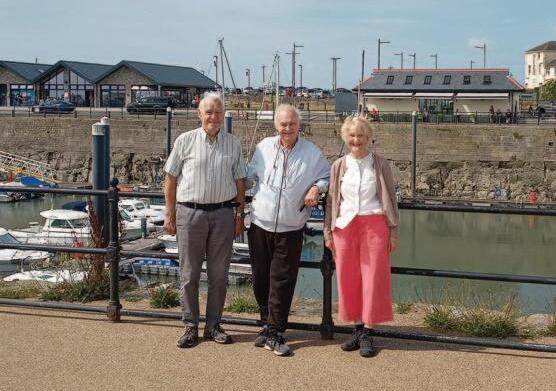
minutes, was meaningless. of course, with their enormous resources, the united states and china were at the top. The table would have meaning only if factors such as total population, gdP, geographical location, system of government et alia were taken into consideration. if they were, i believe the tiny caribbean island of st lucia with
its single gold would be at the top. an adjunct to this was the endless harping on about how the uK’s performance compared with previous olympics. Meaningless. for a start, russia was not taking part. if it had been, then its resources would have ensured it scooped up bucketsful of medals. additionally, why was the total number of events never mentioned?
There has been an enormous increase in recent years. a fair proportion of these i cannot accept as worthy of inclusion. it can only be a matter of time before tiddlywinks, mixed of course, is included in the programme. one can
Enjoying Porthcawl sunshine: (l to r) Roger Dowling, Dave Bush and Judy Dowling
conclude only that
there are lies, damned lies and league tables.
back to your
stable, trusty steed, while we
both cool down and i move to a much more pleasant subject.
Schools tables
closer to home, tables can be equally
misleading in our own world of educa-
tion. how unjust to compare exam re-
sults from a school with a relatively
good catchment area to one from a de-
prived area, where understandably recruitment of well qualified staff is almost impossible.
The latter may be performing heroically in its own way but a simple comparison of results will not show this.
And still talking of tables …
a somewhat artificial connection as i move on from tables to a very special one and this is solid and utterly reliable. but first some background. The publishing of my book No Beating about the Bush was almost entirely thanks to the meticulous work of your esteemed magazine editor, roger dowling. i had intended to show my gratitude by hosting him here in Porthcawl for a few days but covid and health prob-
lems made this impossible. however, in early august we were so happy to see at long last roger, and his wife
Judy, in Porthcawl on two separate
days. The weather was awful on the
first but pleasant on the second. They
were impressed by what they saw and
roger summed up those impressions by saying he now understood why we
are so content living here.
on the first evening, we had a fish and chip supper. as we were finishing, i delighted in telling roger that he was sitting at a table which he had once sat
on. his look of bewilderment was
memorable. i explained that when the
school was being expanded in the
seventies, the changing room near big
Tree Yard moved to the more modern part of the school near the present as-
sembly hall. The changing room had
been completed along with the new
science block in september 1939. (an
interesting aside is that it most pro-
bably coincided with the day i was
born). i had at the time a friend who was a master cabinet maker. his eyes
lit up when i showed him the benches
in the changing room. his elation was occasioned by the fact that these which were being ripped out were made of
solid oak. To ensure everything was
legal, a contract was drawn up with the
builders whereby, for a nominal fee , i bought all the wood in that room.
hence eventually, my friend charlie
pro duc e d a m agnific e n t si x foot by three dining table which we have en-
joyed for approaching fifty years. so all
other almondburians of a certain vin-
tage could make the same ‘on and at’ clai m. i sh o uld me n t i o n t ha t ro g er added he did not sit on it with

any anticipated pleasure as he ad m i tte d to be ing d e cid e dly non-sporting.
W ha t w ill ha ppe n to t his s pe cial i tem o f fu r ni t u re?
facing reality, one day we shall have to downsize and The Table w ill n ee d a n ew h ome. ou r fa m ily has n o in tere s t in inheriting it. brown furniture is out of fashion. it is large. however, it has a fascinating provenance. is there an almondbur ian o u t t h ere w i t h a r us t ic property in the uK or a farmhouse in france who would ap-
Offers invited: this beautiful handcrafted polished oak table will in due course be seeking a new home
preciate it? Perhaps there’s a meeting
place in school where it could be used?
i should dearly like to keep it in the al-
mo nd b u r ian fa m ily. a ny in tere s t or offers?
Time for optimism
optimism is very much to the fore
when i turn my concluding thoughts to the school and society. every time i read ian rimmer’s From the Study i am
struck by several things. how does a Principal who clearly has enormous de-
mands on his time manage to find
some of that time to write at such length? secondly, and i realise this may
sound awfully patronising, what he has to say is beautifully written and is both
realistic and informative. The good
ship ‘King Jim’ is fortunate to have him
at its helm; ian will almost certainly add that he has a great crew to support him.
as for our society, firm grounds for optimism here also. at last, progressive
change is in the air, illustrated by this
new look for our so-valued magazine.
closer ties with the school and plans to recruit more younger members are
now priorities. To parody the olympic
games motto of ‘citius, altius, fortius’
let ours be ‘stronger, closer, Younger’.
herewith, an invitation to any of my
past students to translate this into latin!
Floreant Schola et Societas.

A group of Almondburians met up on 6th July at St Margaret’s Church, Ilkley for a superb orchestral concert by the Leeds Symphony Orchestra. Hosting the reunion was long-time LSO double bass player Chris Makin (KJGS 1954-61).
M ee T Th e sTaff
We meet one of the members of the King James’s School Performance Arts team.
The Almondburian Performance arts at
King James ’ s school includes drama, Music and sport, a diverse range of subjects that would be difficult for one teacher to control. how do you split your responsibilities for these subjects?
RH: We have two heads of faculty in Performance arts: Kim clarke, head of sport and charmian gott, head of Music. i am head of drama. There are eight teachers within the three subdivisions.
The Almondburian What path did you take into teaching?
RH: at school in Manchester i loved english, especially reading and creative writing, but i had anxiety issues with drama, these were cured when i faced a subject choice of
iT or drama. My degree at liverpool edge hill university was in english and drama and i always intended taking up teaching. i had no desire to become an actor, though i have taken on roles in amateur productions.
The Almondburian how long have you been at King James ’ s?
RH: i taught english at a school in Manchester for twelve years before coming to King James ’ s eleven years ago. My first impressions were of a magical resemblance to harry Potter’s hogwarts, though lacking the towers and dungeons. an idea i have for the heritage open days is to produce small historical dramas in the old parts of the school.
The Almondburian how does drama fit into the school timetable?
RH: all pupils in Key stage 3 (years 7,8 and 9) take drama. Thereafter it is taken as an option, as is Music and sport. Pupils following the drama option can take a bTec qualification rather than a gcse in their
final year at King James ’ s. The bTec covers all production and backstage roles as well as performance. Pupils can follow this with
an a level course when moving on to a sixth
form college. We were very pleased last year
that four of our pupils were accepted for prestigious places in Performing arts at
caPa (cathedral academy for Performing arts) in Wakefield.
The Almondburian do pupils of mixed abilities and backgrounds pose problems?
RH: one of the advantages of drama is that
it is a creative rather than academic subject.
Very few pupils don’t want to perform and we take the opportunity to build up their
confidence. We don’t have end of term
exams for drama and course work can be less formal with presentations made as video diaries or scrapbooks.
The Almondburian do you do much teaching yourself ?
RH: as much as i can! i have a busy teaching timetable and enjoy organising the school musical production at christmas and a school play later in the year (last year it was
‘our day out’ by Willy russell).
The Almondburian do you regret not having a sixth form at King James ’ s?
RH: i would like the opportunity to teach
drama at that level but i think many pupils

of that age benefit from a change to a more adult environment.
The Almondburian The school now has over 1,100 pupils, is that a barrier to getting to know them as individuals?
RH: The school i attended had 1,500 pupils and where i taught in Manchester had 2,000 pupils so i see King James ’ s as relatively small. at Key stage 3 we only see each class once a week so it can be difficult to form relationships but the shows, clubs and trips outside of school hours enable pupils to see us giving up our time and that encourages forming of informal contacts.
The Almondburian do you have the opportunity to perform the drama ‘classics’ like shakespeare?
RH: We don’t at present but i would like to. i have no problems with modern costumes and settings but would want to retain the language. shakespeare is studied as part of the english syllabus but performance of his plays is not covered in the bTec drama course.
The Almondburian how do you address pupils and how do they address you?
RH: i always use first names and try to avoid the nicknames they are often given. Pupils address teachers as Mr, Miss or Ms.
My surname of hamlett is, of course, very job appropriate!
The Almondburian What is your approach to discipline and punishment of pupils?
RH: This faculty has a positive approach and i am big on the idea of ‘emotional currency’. if pupils see you are prepared to give them time and support, they appreciate it and will respond in kind. This year the school has introduced a new ‘activate’ programme, running at the cricket Pavil-
ion. Pupils with behaviour problems can be temporarily taken out of mainstream school (rather than exclusion) and given special tuition in literacy, numeracy and practical subjects.
The Almondburian an ofsted inspection is scheduled for the school this academic year. What are your thoughts on this oftencriticised regime?
RH: We do not have a strict preparation programme; if you are following your syllabus and doing what you should be doing you have nothing to fear.
The Almondburian given a magic wand what changes would you like to see in teaching?
RH: a massive boost to finances! This would help all pupils access all experiences and improve our facilities. There is a government Pupil Premium fund to help disadvantaged children but it is being cut every year. We are grateful to parents and some local businesses for sponsorship. This year i have been given the additional task of developing pupil ‘experiences’; trips
out of school to a range of venues that many may not experience as part of their family life. My particular favourites are obviously theatre-based plays and pantomimes. We are also organising ‘unique experience’ trips for example to ski resorts and Krakow (with a visit to auschwitz). sponsored places are being sought to help
those less able to afford to take part.
The Almondburian What are your personal ambitions for the future?
RH: i love teaching too much to move into a more senior role. if i won the lottery, i would buy a bus and take a theatre company around schools. l Rebecca was talking to Richard Teale.
THEREcan be little doubt as to the world event that inspired young second-formerJohn Hoyle to submit this poem to the Editors of The Almondburian, Spring Term 1961.
On 12th April 1961, the Russian cosmonaut Yuri Gagarin became the first human being to journey into outer space. The culmination of the space race between Russia and the US, the event took place just 25 days before America launched its own suborbital flight. Gagarin completed one orbit of Earth in a flight of 108 minutes. It was his only space flight and he later returned to his original occupation as an aircraft pilot; he lost his life when his MiG-15 jet fighter crashed in 1968.
Sadly, the family, friends and patriots of Albert Henry Entwhistle were premature in their belief that their hero had managed to land on the Moon in 1961. The landing was by American astronaut Neil Armstrong who successfully landed his Apollo lunar module on 20th July 1969. l John Hoyle ( James’s Grammar School to study Medicine at the University of Edinburgh.
having seen an advert in the local “Times,”
albert henry entwhistle Was taken by surprise. for years he'd had a strong desire (being of scientific mind),
To penetrate the universe, and see what lay behind. and now the opportunity was there before his eyes,
“Wanted a man with courage to penetrate the skies,” and little time was wasted to make a strong appeal,
To be the man selected for such a brave ordeal. a quick reply surprised him, With the details of the place
To which
To


In a chance conversation with my builder, I learned of his discovery of an old book which is now amongst my most treasured possessions.

in the early 1960s i was living in dunstable, having been recruited as a lec-
turer in the local college of further education, working
in the department of Printing. My wife and i had just moved into a small bungalow, not far from the town centre. one day, as we were having a new fireplace fitted, the old bedfordshire builder doing the job came out with a nugget of information which made me take notice. having learned that i was involved in printing. he casually mentioned that he
had made a discovery whilst renovating an old cottage in a nearby village. stuffed
up inside an inglenook fireplace was an old book, minus cover, folded in two. he brought it round for my inspection and i was well pleased with what i saw. he said he would be happy to part with it if i was interested but neither of us had any idea what it was worth. it was in very poor condition.
i was going down to the british Museum shortly afterwards and suggested that i get some idea of value from them. it would seem
that it wasn’t worth very much, especially in view of its condition and also because
it was a second edition. on my return, terms were agreed and, for a very modest sum, the builder was happy and the book
was mine.
it was The History of the Reformation of the Church of England and may have been
stuffed up the chimney to avoid religious persecution. it remained in that condition
for a few years until i later moved to norwich, also in the department of Printing.
The department was well equipped with

sections representing all aspects of the industry – compositors’ work, letterpress and lithographic printing, design, graphic reproduction and bookbinding, it was the latter department which changed things. one of the lecturers, the late Thomas docwra, rose to the challenge of giving my book another lease of life in 1967, and what a fine job he made of it. he didn’t want any cash for his work, having enjoyed working on the book but we settled on providing some shrubs for a new hedge in his beloved garden. bound in fine leather and
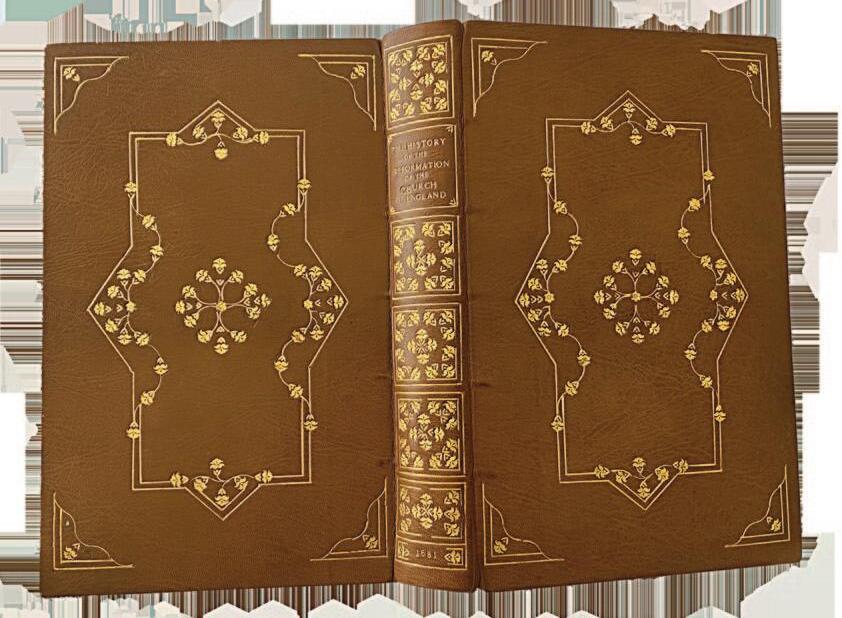
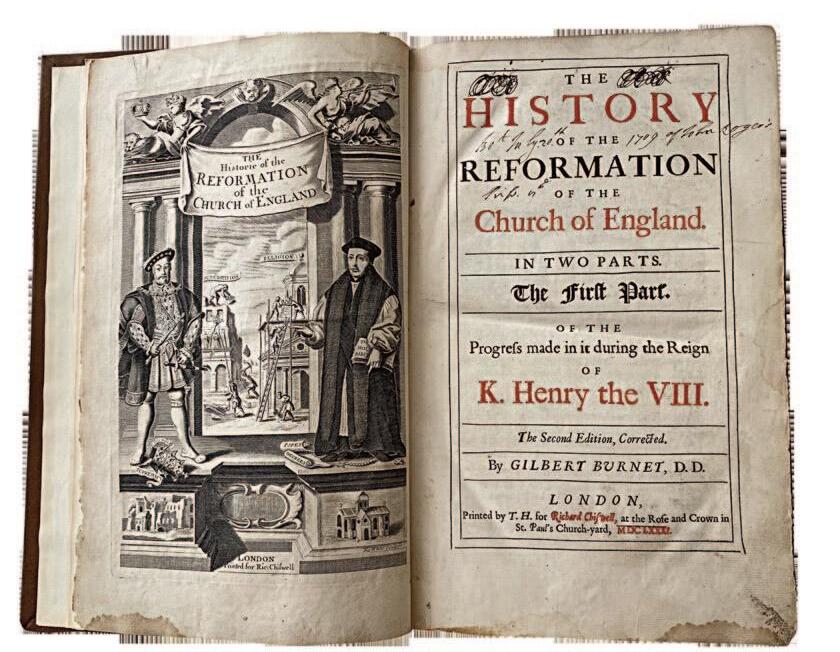


Top: Title page of Book II
Bottom: In a handwritten comment on the endpapers, a previous owner of the book suggests that ‘the historian sets out the best sides of his party’ and ‘ but lightly touches the failings of his friends’ – thereby departing from ‘the laws of an exact historian.’
blocked in gold, it is good for another few hundred years. it is a hefty tome, weighing in at 4 lbs, with dimensions of 13" by 8" by 2" (imperial measures seem more appropriate). one handwritten paragraph on
the end papers was retained to give some link with the original. There are also odd
jottings on the title page. There are over three hundred pages (all hand-set type, re-
member) on hand-made paper, with many engravings of historical figures of the
time. i created a special page outlining the story of restoration and Thomas included that in the final work.
l The first edition of Gilbert Burnet’s history of the reformation of the church of england was printed for the eminent London bookseller Richard Chiswell in 1681.
hudd er sfi e ld n e Ws
Work has just started on a major new healthcare facility on Huddersfield University’s Southgate site, to be named after the School’s eminent former Governor.
cONSTRUCTION is now under way
on a 6,800 sq m building on the university of huddersfield’ s na-
tional health innovation campus. due for
completion in december 2025, the new facility will be known as the emily siddon
building in honour of a healthcare pioneer
in the town who had close links with al-
mondbury grammar school and was a governor from 1897 to 1922.
The ground floor of the emily siddon
building will host a community diagnostic centre in partnership with calderdale and huddersfield nhs foundation Trust, the
first of its kind on a university campus. The cdc will provide access to thousands of additional diagnostic tests , including Mri and cT scans.
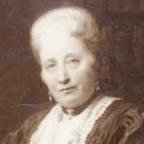
other floors of the building, designed by architects ahr, will contain specialist clinical teaching facilities. The building will also be home to a health and Wellbeing innovation centre for local entrepreneurs and start-ups.
l Emily Siddon was a governor of Huddersfield Technical College from 1907 until her death in 1923. Late in her life she had become only the second woman in the country to be made a Justice of the Peace and had a particular focus on mental health and learning disabilities. She had a passion for education and on numerous occasions put her own money into the School to keep it open. Siddon House was named after her and for many years the Siddon Bowl was awarded for House Football.

As Senior Mental Health Lead at KJS, my role is to help young students to cope with their problems. My recent bereavement has helped me to understand their needs.

i am starting to write this
piece a few weeks before
World Mental health
day. every year i do as-
semblies and create re-
sources for form tutor time
focusing on the issues linked with men-
tal health and it is something that i feel
very strongly about. it is particularly
pertinent this year because i am deal-
ing with bereavement following the
death of my dad.
This is the first time in my teaching
career that i have ever had to deal with
something so life changing and devas-
tating all at the same time. in the past, i
have been in awe of my friends and col-
leagues who also work in education and who have gone through bereavement following the death of a loved one. i have always wondered how the heck they
managed to keep going in what is an emotionally, physically and mentally tough job while trying to deal with their
own upset and grief. and now here i
am…
its difficult to describe how i am
coping as a teacher and as a senior leader. on a day to day basis, while in the classroom, it is easy to get caught
up with the students, teaching them,
celebrating their successes and sup-
porting them when they need it. Working in a school is all encompassing with
the endless list of to-do tasks. added to that is that each day is very different and sometimes you cannot plan ahead. dealing with young people, their
families and their circumstances can be unpredictable, chaotic, heartbreaking, joyful and confusing all at the same
time and for brief moments it can be a distraction from the hole created by the grief. until it comes rushing back.
The death of my dad has taught me
many things as a person but also as a teacher:
it has taught me to be gentle with
myself and others and not expect per-
fection as we don’t always know what is going on behind the scenes. it has made me realise that for many of the young
people who i deal with, they may also
have hardship that they are dealing
with in their own lives and in their own
way.
it has taught me that it is a good
thing to be human and flawed. i have
learned to accept it in myself but also in
my students. it is a liberating realiza-
tion.
it has taught me to make the most of
life and be grateful for my blessings.
Yes, working in education can be tough
but on the whole, i love my job and i am very lucky to be doing something that i feel passionate about.
finally, i am now more conscious of trying to make the most of every moment. This was a key message from a poem that was read at my dad’ s funeral: The Dash by linda ellis. These words are especially meaningful to me in my day to day life as a teacher:
If we could just slow down enough to consider what’s true and real, and always try to understand the way other people feel. Be less quick to anger and show appreciation more, and love the people in our lives like we’ve never loved before. If we treat each other with respect and more often wear a smile, remembering that this special dash might only last a little while.

by Linda Ellis
I read of a man who stood to speak at the funeral of a friend. He referred to the dates on the tombstone from the beginning to the end. He noted first came the date of the birth and spoke the following date with tears. But he said what mattered most of all was the dash between the years. For that dash represents all the time that they spent life on Earth. And now only those who loved them know what that little line is worth. For it matters not how much we own, the cars, the house, the cash. What matters is how we live and love, and how we spend our dash. So, think about this long and hard. Are there things you’d like to change? For you never know how much time is left that can still be rearranged. If we could just slow down enough to consider what’s true and real, and always try to understand the way other people feel. Be less quick to anger and show appreciation more, and love the people in our lives like we’ve never loved before. If we treat each other with respect and more often wear a smile, remembering that this special dash might only last a little while. So, when your eulogy is being read with your life’s actions to rehash, would you be proud of the things they say about how you spent your dash?
sP or T
“THE HACKER”
Robin Merchant won the this year’s Cup competition, putting an end to the winning run of Mark Slater who finished in second place.
This year’s gothard cup com-
petition was held on sunday,
21st July at its traditional home
of Woodsome hall golf club. eight al-
mondburians enjoyed good weather,
good company and a course in great
condition.
The almondburian players were
robin sharman, Mark slater, david
Parry, simon russell, richard brown, roy addyman, Paul grant and robin
Merchant. They were joined by John
chacksfield, who due to an injury was
unable to play but caddied for roy.
Mark slater put up a great defence
of his title, but a poor 18th hole really
cost him. on the other hand, robin Merchant came back
in gross level par, to score 21 points. fo ll ow ing t h e
golf, everyone ad-
jo u r n e d to t h e clu b h o us e to watch the closing
holes of the open c ha mp i o nshi p, p laye d a t r oy al
Troo n . X and er schauffle won, to be c ome c ha m -
WiNNer
Year. obviously, they forgot to take the gothard cup into account…
We were joined in the clubhouse by a group of golfers from davenport golf club, cheshire who joined in our celebra-
tions of two great golfing events! They
also helped us finish off the additional
food we had ordered in error due to a few late cry-offs!
Many thanks, as always, must go to Woodsome hall for providing an excel-
lent meal and venue for our competition.
Many thanks also to robin sharman, who
made all the arrangements with the club.
We also collected £30 for a school
Prize which will be presented to the pupil
“achieving the best sporting achievement outside
robin Merchant (39 points)
l 2ND PlACe
Mark Slater (37 points)
l FrONT NiNe
David Parry (20 points)
l bACK NiNe
Simon russell (16 points) after countback over Richard Brown
l 2’S

Simon russell and robin Merchant both at the 13th
pion golfer of the 54
school”.
The gothard
cup will be contested again in
m id -J un e/e a r l y
July 2025, so if you think you
might enjoy good
company, good
food and wine,
mixed in with
some golf we’ll be
delighted to s ee you there.






1. Robin Sharman plays a fine shot out of a bunker
2. Simon Russell
3. Roy Addyman holes a long putt
4. David Parry
5. Defending Champion Mark Slater tees off 6.Richard Brown tees off, watched by Paul Grant
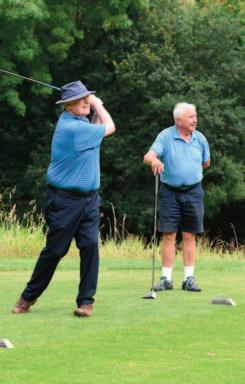
sP or T
We were once again grateful
for the use of the facilities of
longley Tennis club, where
most of our regular players are now
members, on Thursday evenings dur-
ing the summer and once again we
joined forces with a number of other
longley members to augment our
numbers. The weather was reasonably
kind too and we made very little use of
the indoor court, although we did have
a few near misses with the weather and,
on one occasion, enjoyed a spectacular
double rainbow.
The final evening of tennis was
Thursday, 29th august and those al-
mondburians who played tennis at
some point during the summer are:
david Parry, robin Merchant, andrew
haigh, sally starbuck, eleanor haigh,
charlotte haigh, annabel haigh and
alex Murray.
The new badminton season got off to
a resounding start on Thursday, 5th
september, when david Parry turned
up to play. Yes, that was it! ian daffern

A double rainbow and two doubles tennis matches at Longley
was refereeing a football match and i had a governors’ meeting. When i event-
ually got around to the sports hall after my meeting david, to his credit, was still there, all on his own! We briefly debated playing singles, but then decided
to retire to the conservative club for
refreshments. This turned out to be well worthwhile, since neil gledhill, one
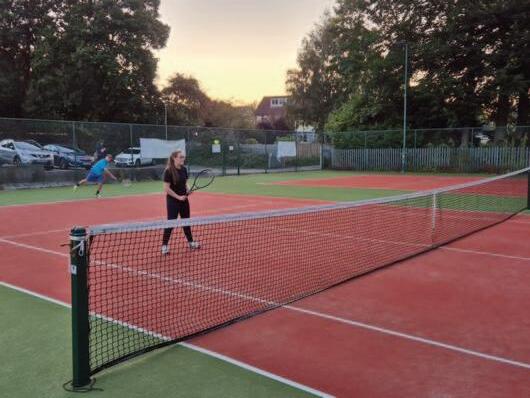
of our former regulars who has now retired from playing badminton and tennis, turned up to join us for refreshments looking fit and well. The following week, we had a much better turnout of six players. however, during the course of conversation over refreshments that evening it turned out that, due holidays and work commitments, numbers were g o ing to be very l ow again for the next two weeks. We therefore decided to cancel the remainder of september and start properly on Thursday, 3rd october when, hopefully, we will be back to full strength.
We have two courts available in the school sports hall every Thursday during term time from 7.30 pm. – 9.00 pm. Those who have played badminton so far this

season are: david Parry, robin Merchant, ian daffer n , a nd rew haigh , cr ag Wa tt s and Joe schewtschuck. do come along and join us.
(Top) David Parry and Eleanor Haigh playing mixed doubles
(Bottom)
Badminton is fun, especially on your birthday. Charlotte Haigh, Ellie Newham and Eleanor Haigh at the end of last season
Chartered accountant who developed a deep love of travel, garden and sport.
We are sorry to learn of the death in calderdale royal hospital on 17th april last year of Tony Carter of fenay bridge.
Tony was a pupil at the former independent primary school Rosemeade in bank end lane near his home, before passing to attend almondbury grammar school in 1946. from school, he joined Simpson Wood & Co and trained to become a chartered accountant. he did his national service in the army, not surprisingly becoming known as ‘cash carter’. he subsequently joined C Connelly & Co where, in due course, he became a senior Partner.
Tony and his wife anne had two children amanda and Julie, both of whom subsequently attended King
James ’ s school.
Tony had a lifelong love of travel
around the british isles, rarely needing
a map to find his way around. When
amanda and Julie were young, the
family paid regular visits to anne’s
parents in st austell, cornwall. later,
he particularly enjoyed holidays with
his expanded family of eight grandchildren to Wales, dorset and the lake
district.
a keen sportsman, Tony took annual tr i p s w i t h his brot h er s and brother-in-law to the Wembley cup
f inal . for m any ye a r s h e p laye d
snooker each week at Moldgreen con-
servative club or almondbury liberal
club.
but Tony’s biggest love, shared with
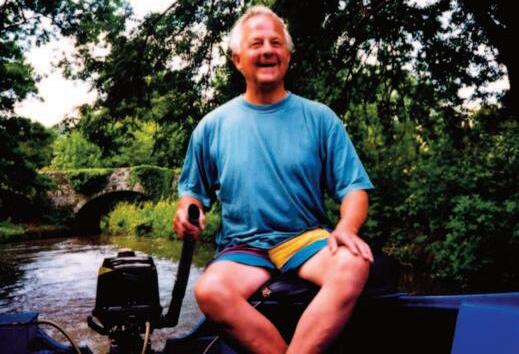
anne, was gardening and Tony produc e d la r g e q uan-
t i t i e s o f be dding p lan t s which h e re adily d o na te d to his child re n al o ng with copious expert advice on their cultivation.
Tony Carter, born 9th August 1935, died 17th April 2023 aged 87.
Our thanks to Julie Hepworth .
President
ian riMMer
King James ’ s school, st helen ’ s gate,
almondbury hd4 6sg
Tel: 01484 412990
email: staff.irimmer@kingjames.school
chairman
WalTer raleigh
15 Thorpe lane, almondbury hd5 8Ta
Tel: 01484 308452
email: walter.raleigh@asoc.org.uk
secretary andreW haigh
2 arkenley lane, almondbury hd4 6sQ
Tel: 01484 432105
email: andrew.haigh@asoc.org.uk
Treasurer
KeiTh craWshaW
5 benomley drive, almondbury hd5 8lX
Tel: 01484 533658
email: keith.crawshaw@asoc.org.uk
Media editor
roger doWling
orchard house, oughtrington lane, lymm, cheshire Wa13 0rd
Tel: 01925 756390/07815 601447
email: almondburian@asoc.org.uk
assistant Media editor richard Teale
The sycamores, 239 huddersfield road, Thongsbridge, holmfirth hd9 3TT
Tel: 07810 313315.
email: richard.teale@asoc.org.uk
KJs representative abbigail TerrY
King James ’ s school, st helen ’ s gate, almondbury hd4 6sg
Tel: 01484 412990
email: staff.aTerry@kingjames.school

Website: www.asoc.org.uk
The Almondburian is distributed to OAS members free of charge. Price to non-members: £3.00